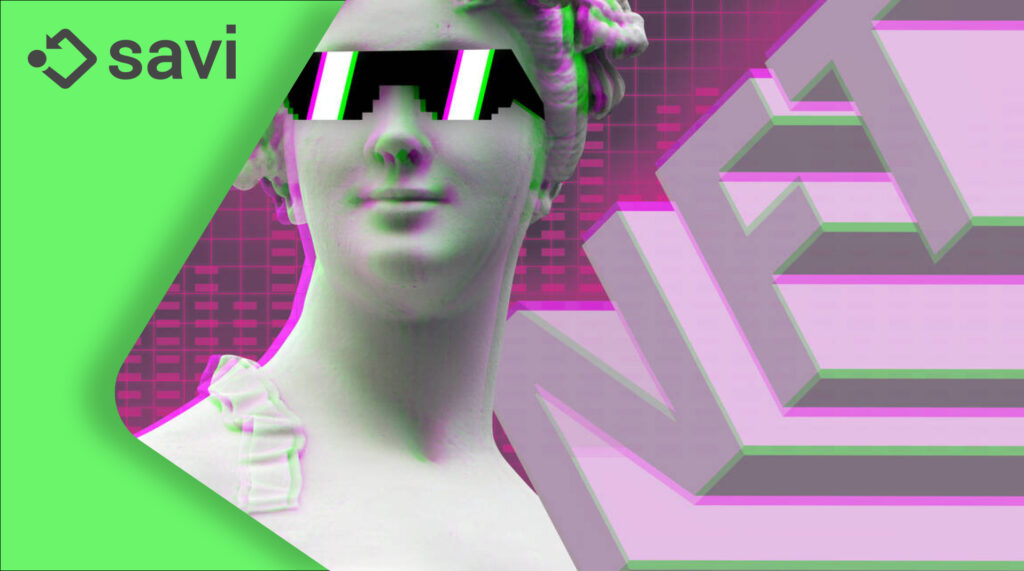In the world of crypto and blockchain, tokens are hot. They represent a measurable value that can be used to provide access or control to something – an action, a process, a system, or even another token.
The boom of blockchain-based services and the development of new decentralized platforms have created opportunities for entrepreneurs and developers to create new tokens as well as launch new businesses using tokens as their primary source of capital.
Non-Fungible Tokens (NFTs), also known as unique tokens or digital assets, are becoming increasingly popular as they enable developers to create more complex token-based systems that can track ownership and other properties within their systems. NFTs are essentially a new category of tokens in the sense that they are unique and have different properties from one another. In this article, we will cover a step-by-step guide on how to mint NFTs.
Why should you care about minting NFTs?
Suppose you’re an entrepreneur or developer looking for a way to fund your new project. In that case, you may be inclined to use a token sale or an ICO (initial coin offering) as a way to generate initial capital. A token sale is similar to an initial public offering (IPO) in that a company issues shares of ownership to investors in exchange for money. However, with an ICO, the tokens are used as the primary method of payment and are typically tied to a specific service or product. Tokens can be used to offer access to a product, provide a way to monetize a service or be used within an ecosystem as a way to provide value to different participants.
Minting NFTs and creating a new token can be a great idea because individuals and investors will want to hold onto the tokens rather than sell them. The longer the tokens stay in circulation, the more they are worth, as they increase in value as the demand grows.
How to mint your NFTs?
Minting NFTs is a process by which you create a new token on the blockchain. The main benefits of minting NFTs are that they are:
- Flexible – You can add or remove features as you please. If your business changes in some way, you can adjust without affecting all your coins.
- Easy – You don’t need to do anything special to mint tokens; just follow a few simple steps. This makes it possible for anyone to make money with NFTs, regardless of technical skillset.
- Faster – You can get started much sooner than with a traditional ICO or crowdfunding campaign. Minting NFTs doesn’t take time, and you don’t have to wait for investors to fund your project before getting started.
Here’s how to get started:
1. Connect your wallet
To get started, you’ll need to first create a cryptocurrency wallet and then link it to the NFT marketplace. Create a profile and tell the NFT community about yourself, include links to your website or social media sites, and indicate which cryptos you’ll accept as payment for your NFTs.
2. Create your first item
Look for a create button on the NFT marketplace’s home page. You’ll be asked to upload a digital file and give your NFT a name after that.
3. Make sure your wallet is funded
Selling an NFT (recording a transaction between two parties on a blockchain) necessitates some computing on the network’s part. There will be a charge for this transaction, which is known as a “gas fee.” To perform your first sale, make sure you’ve purchased Ethereum (or another cryptocurrency) into your wallet using a crypto trading app.
4. List your NFT for sale
You’re ready to sell your NFT on the open market once you’ve minted it. On your NFT’s description page, search for and click the “Sell” button.
5. Manage your NFT business

After you’ve posted your NFT, think about marketing to potential patrons. You can also produce more NFTs and add them to a collection, which may attract collectors’ or speculators’ interest. NFTs manufactured on one platform can be transferred and sold on another, although there may be fees.
Interacting with users and collectors on NFT marketplaces, like any other online activity, generates rapport, which can help you grow your new NFT business. Keep an eye on what’s going on with your creations, ask for comments, and keep creating new pieces for digital collectors to buy.
Choosing a marketplace/blockchain, and connecting your wallet
NFTs marketplaces are to non-traditional retailers what Amazon and eBay are to consumer goods. To gain access to and use these types of marketplaces, you’ll need the following:
- A crypto wallet:
You’ll need a crypto wallet that’s compatible with the blockchain network that supports the NFTs you want to buy. For example, if you’d like to buy and trade NFTs using Ethereum, you’ll need a compatible wallet like Metamask. You’ll need to use a wallet provider like Sollet to buy NFTs on the Solana platform.
- Coins in the wallet:
You must first fund your wallet before purchasing, listing or minting an NFT. Once again, you’ll need to check which cryptocurrencies are supported in the marketplace you’re considering.
- A user account:
You’ll need to create an account on the specific marketplace where you want to buy NFTs.
Types of crypto wallets
There are two main types of crypto wallets based on private keys.
They are:
- Hot wallets –
A hot wallet is a wallet that is connected to the internet, thereby making it vulnerable to hackers.
- Cold wallets –
A cold wallet is a secure offline (hardware) wallet, (like a USB or paper wallet) that is not connected to the internet.
The safest way to keep your cryptocurrency is to keep it in a cold storage wallet.
Upload your collection onto the blockchain account

After topping it up, you’ll need to connect your wallet to the NFT platform you’ll use to create your digital asset. Choose your digital wallet (for example, MetaMask) and provide Rarible (or another marketplace) access to your account.
Accept the platform’s terms of service by clicking Connect. Upload the digital file that you’d like to mint as an NFT. The next step is to decide how you wish to sell your NFT file. It is not necessary to sell the asset while it is being created. After minting it, you can put it on sale and set a minimum price. Choose whether to provide a full high-resolution version of your NFT or to include unlocked features via a hidden download link or webpage.
Paying the “Gas fee”
The unit of measurement for the amount of computing effort necessary to perform various activities on the Ethereum network is called gas.
Because each Ethereum transaction necessitates the use of computing resources, each transaction demands a charge. Gas fees are denominated in ether (ETH), Ethereum’s native currency. Gas costs are expressed in gwei, which is an ETH denomination – one gwei equals 0.000000001 ETH. The ‘gwei’ is short for Giga Wei, named after Wei Dai, the creator of b-money. You may say ‘my gas costs 1 Gwei” rather than 0.000000001 ether.
Conclusion
NFTs are one of the most popular token types, as they enable developers to create more complex token-based systems that can track ownership and other properties within their systems.
The fact that NFTs are unique and different from one another makes them more useful in certain applications than fungible tokens. If you’re an entrepreneur or developer looking for a way to fund your new project, NFTs can be a great way to generate initial capital.





